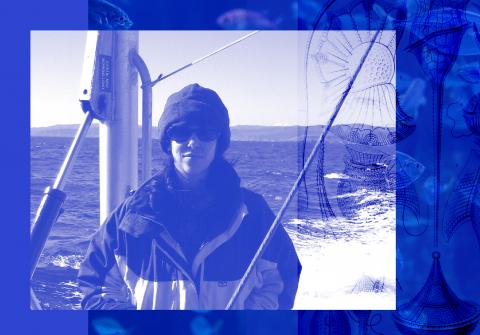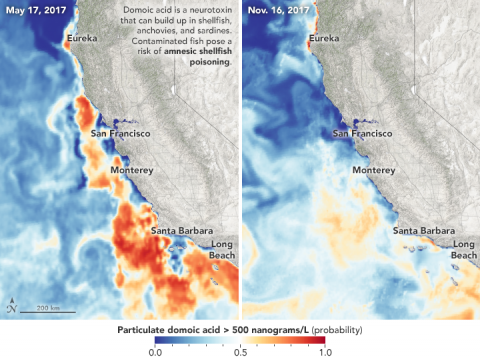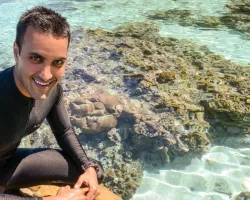Clarissa Anderson, Executive Director at Southern California Coastal Ocean Observing System (SCCOOS), is fascinated with algae. In fact, over the course of her career, she’s become hooked on discovering what makes phytoplankton tick. It might seem like a small piece of the giant puzzle that is our ocean ecosystems, but for Anderson it’s one of the most intriguing elements of aquatic life—one that’s defined her career for over a decade.
How did Anderson get to where she is today? Let’s take a look.

THEN
Anderson received her B.A. at University of California, Berkeley and her Ph.D. from UC Santa Barbara. During undergrad, she majored in biology and art history—ultimately choosing a route in marine science.
“I was really interested in things culturally, so when it came time to carve out my future I was a bit torn,” Anderson said. “I highly considered going to graduate school for art history but [gravitated] towards environmental service.”
That pull led her to the ocean and the ecosystem that inhabits it. In fact, the ocean has played a pretty big role in Anderson’s life, forming the backdrop for some pivotal moments. On two different trips to Costa Rica, she studied manatees (although she never actually spotted one) and dived on a coral reef with renowned researchers. Both trips were monumental for Anderson.
“I really knew early on that oceans were going to be a huge part of my life somehow because I did a study abroad in Costa Rica to do tropical biology,” she said “I didn’t end up doing tropical work for my dissertation, [but] that was really a defining moment for me. I just knew somehow that I wanted to do ocean work.”
And while Anderson now conducts research from her office, her work didn’t always happen from behind a desk. During her years in the field, she had the opportunity to do some “gnarly” work, sometimes at night and often by herself. Anderson tracked nocturnal spiders on the South Fork of the Eel River and extended that fascination of arachnids to a thesis project in Costa Rica on another riparian orb-weaving spider, which required pre-dawn adventures into the cloud forest to set up experiments and collect data. Work on oceanography cruises was a bit more tame, although often nocturnal and unpredictable.
“I think that people look at me and think that I’m [a] girly-girl, but I love being in the outdoors,” she said. “I had this whole past where I wanted to be the mega-ecology nerd.”

NOW
Anderson’s journey has led her to the role she currently holds at SCCOOS
Her fascination with the ocean—and more specifically with phytoplankton—has pushed her to pursue solutions for harmful algal blooms (HABs) on California’s coast. With funding from NASA Earth Science Applied Sciences Ecological Forecasting Program, Anderson has been able to dedicate time and resources to finding solutions for HABs on the coast using Earth-observing satellites.
“Just thinking about the coastal zone alone, it’s a pretty vast area,” she said. “Satellites have allowed us to really expand, but we’re still struggling to get out there and explore. The public doesn’t appreciate how important our downward looking satellites are to our fundamental understanding of this planet.”
With the 2017 release of the California Harmful Algae Risk Mapping (C-HARM) System, which informs when and where toxic blooms occur, Anderson’s research made its most profound impact yet. From the data acquired, Anderson supported the development of the CA HAB Bulletin, helping NOAA, Sea World, CA Department of Public Health, and even Bernard Friedman, a Santa Barbra shellfish farmer.
“The coastal zone is where it’s at because that’s where people are living,” Anderson said. “It’s every level of public interest that you can imagine that we want to serve. It’s a huge challenge, but it’s pretty exciting.”

NEXT
Anderson wants to be a mentor. Whether it’s one-on-one with her graduate students or individuals interested in the work she does, mentoring is something she hopes to incorporate into her day-to-day more regularly.
“It’s really fulfilling and I haven’t done enough of that in my career,” she said.
Having discovered her own innate fascination with a small part of the ocean’s ecosystem, Anderson hopes she can inspire the next generation of algae enthusiasts.


